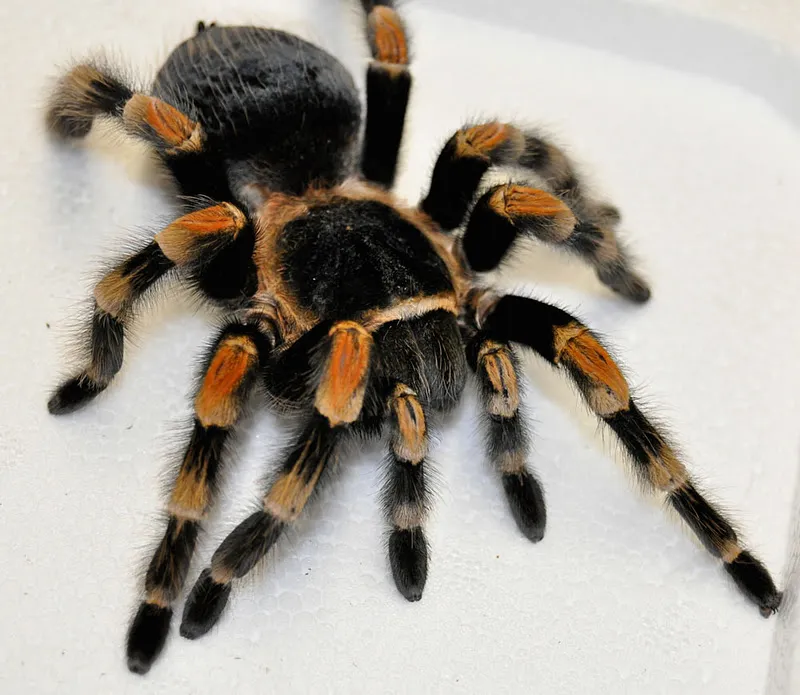The Red Knee Tarantula (Brachypelma hamorii) is a captivating creature, a favorite among tarantula enthusiasts, and for good reason. These spiders are known for their striking appearance, relatively docile temperament, and manageable care requirements, making them a great choice for both beginner and experienced keepers. However, like any pet, Red Knee Tarantulas need specific care to thrive. This guide unveils the top 5 secrets to providing optimal care for your Red Knee Tarantula, ensuring a long, healthy, and fascinating life for your eight-legged friend.
Secret 1 Habitat Setup
Creating the right habitat is the foundation of successful Red Knee Tarantula care. Their enclosure should mimic their natural environment in the wild, a semi-arid environment. Proper setup ensures your tarantula feels secure, has the right conditions for molting, and can live a stress-free life. The enclosure is not just a cage; it’s their home, their world, and it should be designed to meet their specific needs to thrive. Failing to set up the proper habitat is one of the most common mistakes made by new keepers.
Enclosure Size for a Red Knee
A juvenile Red Knee Tarantula can be housed in a smaller enclosure, such as a 5-gallon tank or a container roughly 12x12x12 inches. However, as your tarantula grows, they’ll need more space. A full-grown adult will thrive in a 10-20 gallon enclosure, approximately 18x18x12 inches or larger. The enclosure should be well-ventilated but secure, with a secure lid to prevent escapes. Remember that the size of the enclosure impacts the tarantula’s quality of life and molting success.
Substrate Essentials for Red Knee Tarantulas
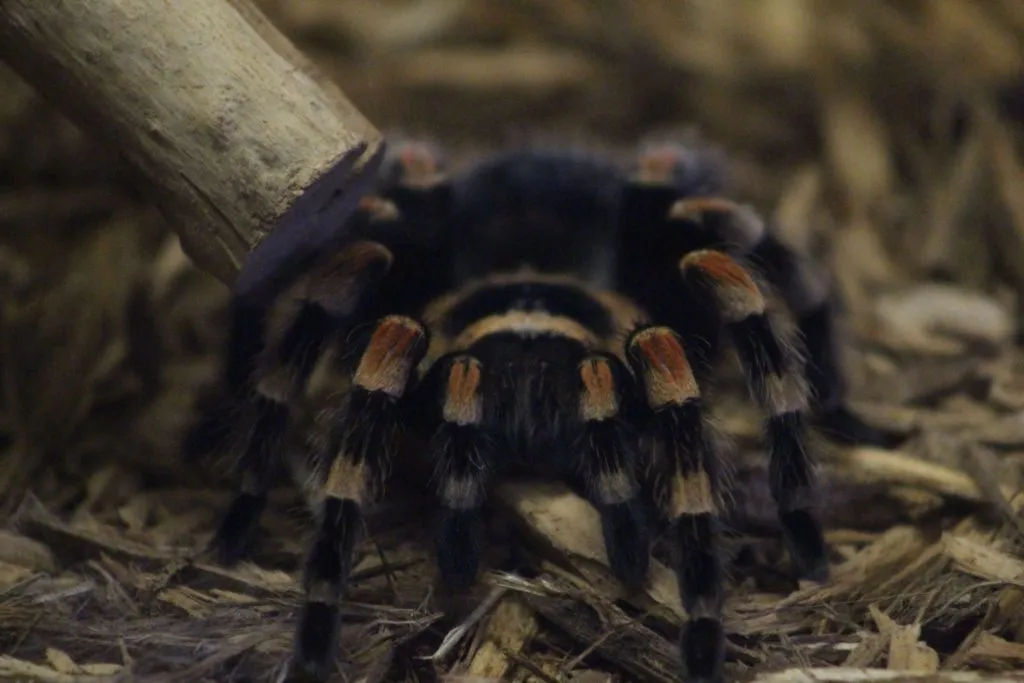
The substrate is the bedding material on the bottom of the enclosure. For Red Knee Tarantulas, a substrate that retains some moisture while allowing for burrowing is ideal. A mixture of coconut fiber, peat moss, and a bit of vermiculite works well. The substrate should be deep enough (4-6 inches) to allow the tarantula to burrow and create a comfortable hide. Avoid using gravel or sand, as these are not ideal for burrowing and can be difficult to clean. The substrate is important because they can spend a lot of time on or inside it.
Humidity and Temperature Control
Red Knee Tarantulas thrive in a semi-arid environment. Maintain a humidity level of 60-70% by lightly misting one side of the enclosure every few days, allowing the other side to remain dry. This creates a humidity gradient. A shallow water dish is essential, providing a constant source of fresh water. The temperature should be kept between 75-85°F (24-29°C). Supplemental heating, such as a heat mat on the side of the enclosure, may be necessary in cooler environments. Monitoring temperature and humidity is essential.
Secret 2 Feeding Your Red Knee Tarantula
Proper nutrition is crucial for the health and growth of your Red Knee Tarantula. Feeding habits can differ based on the spider’s age and molting cycle. A well-fed tarantula will be more active, healthy, and less likely to exhibit defensive behaviors. It’s important to offer the right food, in the correct quantities, and at appropriate intervals to keep your pet happy and healthy. Overfeeding or underfeeding can both lead to serious health problems.
Appropriate Food Choices for Red Knees
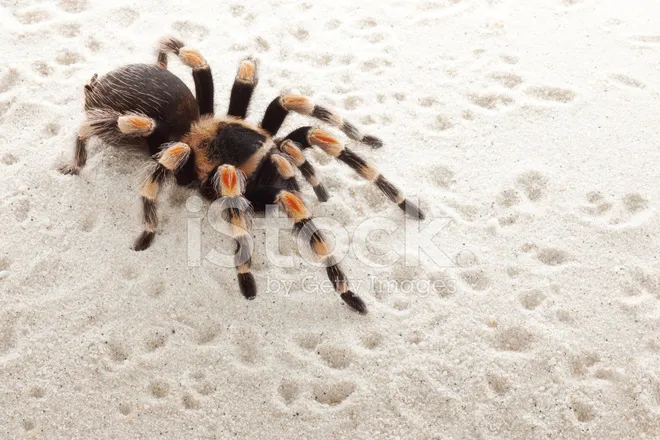
The primary diet for Red Knee Tarantulas consists of insects. Crickets, mealworms, and roaches are excellent choices. Ensure that the insects are gut-loaded (fed nutritious food) before offering them to your tarantula. This ensures the spider receives adequate nutrients. Avoid feeding your tarantula insects caught from the wild, as they may carry parasites or pesticides. Supplement the diet with the occasional pinky mouse for adult tarantulas, but this should be a rare treat.
Feeding Frequency and Portion Sizes
Juvenile tarantulas should be fed 2-3 times per week, while adults can be fed once a week or every other week. Adjust the feeding frequency based on the tarantula’s size and appetite. Remove any uneaten insects within 24 hours to prevent stressing the tarantula. A tarantula in premolt will typically refuse food. Do not offer food during this period. Observe your tarantula’s abdomen size; a well-fed tarantula will have a plump abdomen.
Secret 3 Handling and Interaction
While Red Knee Tarantulas are relatively docile, they are still wild animals, and handling should be approached with caution and respect. Understanding their behavior and knowing when to avoid handling are essential for your safety and the spider’s well-being. Responsible handling is important for the comfort and safety of both the owner and the spider. Overhandling can stress your tarantula.
When and How to Handle Your Tarantula
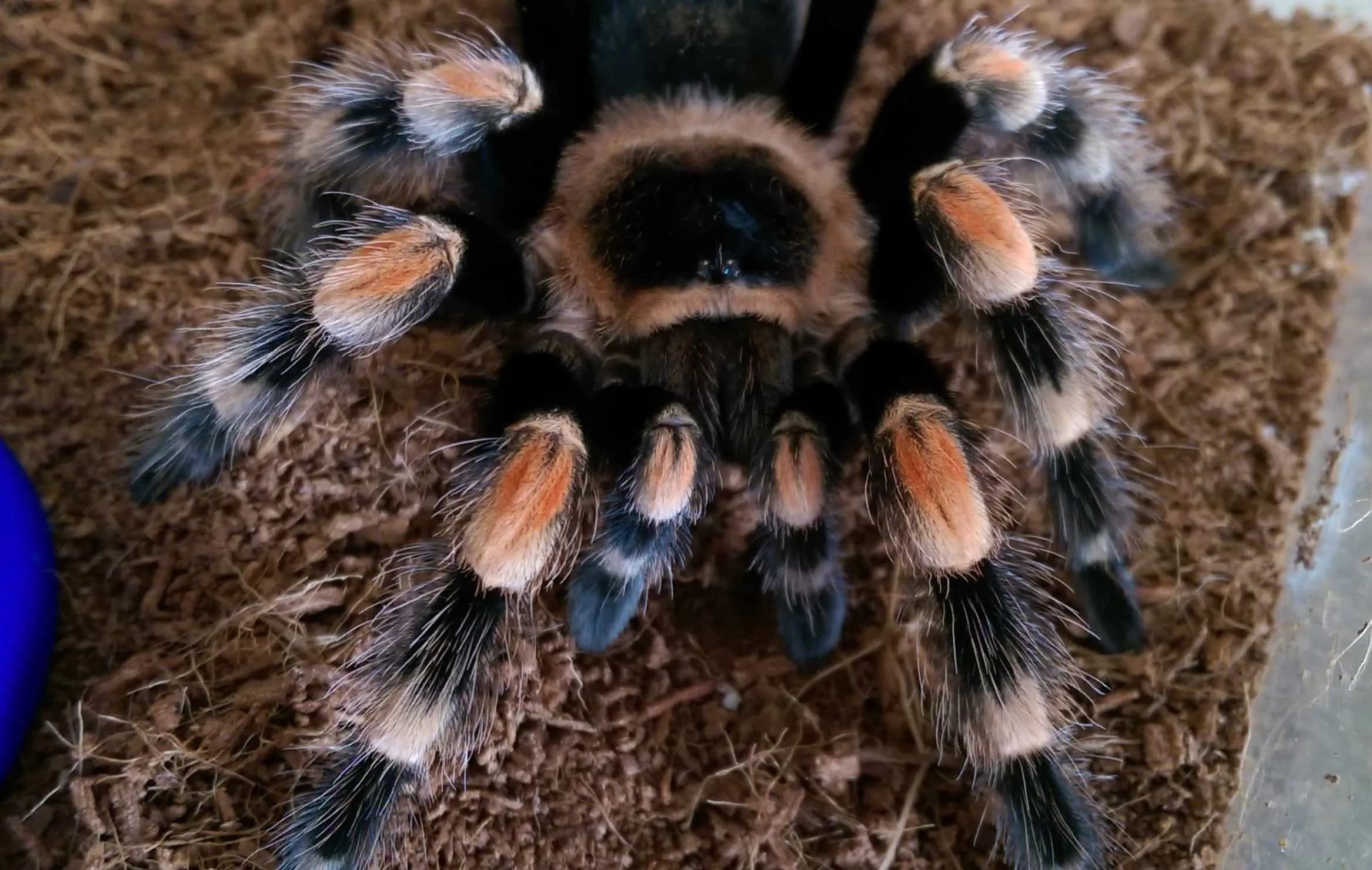
Handling a Red Knee Tarantula should be kept to a minimum and only when necessary, such as for enclosure maintenance. If you choose to handle your tarantula, do so close to the ground or over a soft surface to prevent injury from a fall. Gently coax the tarantula onto your hand. Avoid quick movements. Always wash your hands before and after handling. Never force a tarantula to come out of its hide, as this can cause stress.
Recognizing Signs of Stress
A stressed Red Knee Tarantula may exhibit certain behaviors, such as flicking hairs (urticating hairs) from its abdomen, raising its front legs in a defensive posture, or attempting to flee. If you notice any of these signs, immediately cease handling and allow the tarantula to retreat. Avoid handling during molting or when the tarantula is in premolt (preparing to molt). Premolt tarantulas are more fragile and vulnerable.
Secret 4 Health and Wellness
Maintaining the health and wellness of your Red Knee Tarantula involves proactive measures. Preventative care is easier and better for your pet than treating an illness or injury. Paying close attention to your tarantula’s environment, feeding habits, and behavior can help you detect any problems early on, ensuring your tarantula lives a long and healthy life. Proper care minimizes the risk of disease or injury.
Common Health Issues in Red Knees
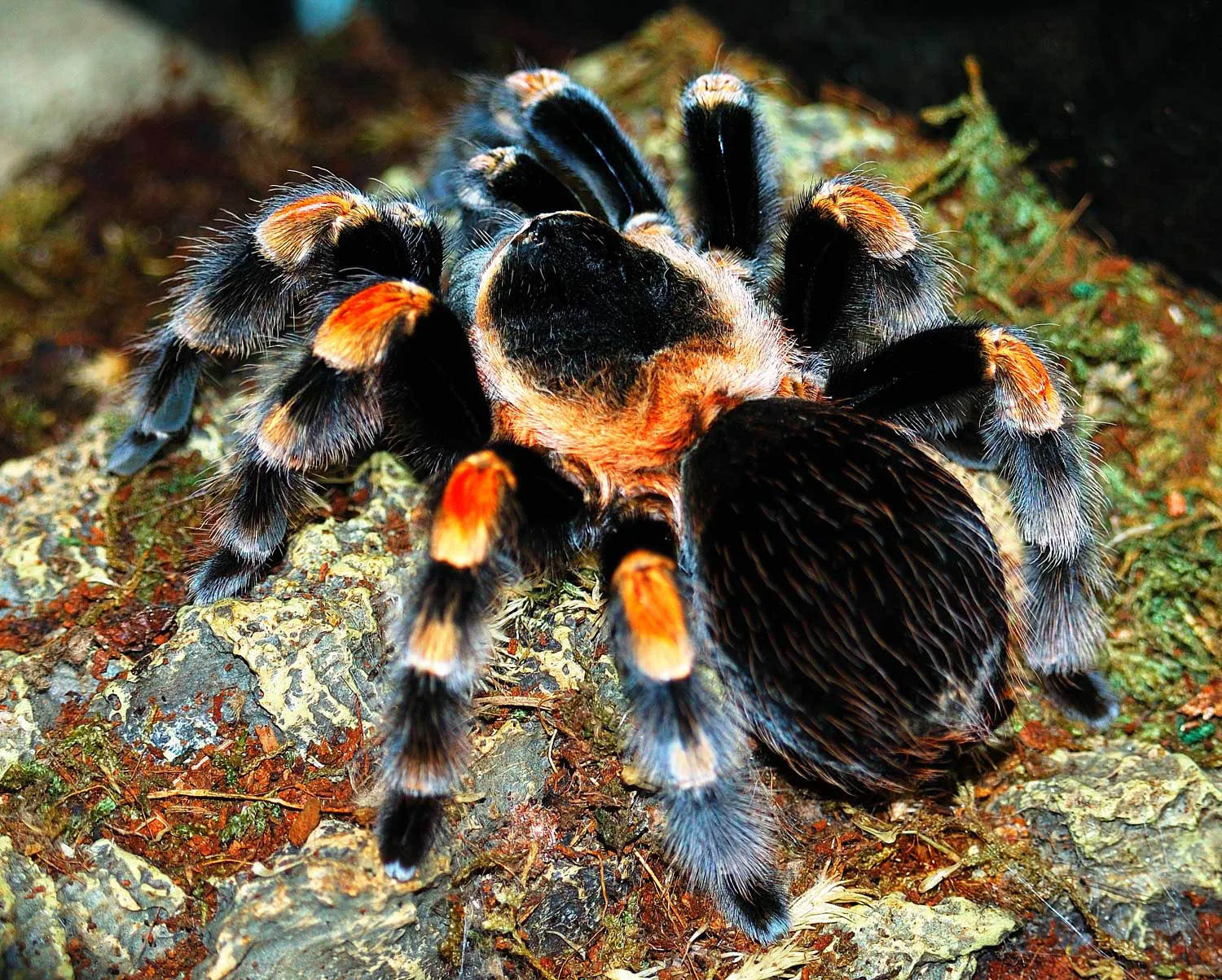
Common health issues include parasites, fungal infections, and injuries during molting. Parasites can be prevented by ensuring that insects offered as food are parasite-free. Fungal infections are often related to high humidity and poor ventilation. Injuries can occur if the enclosure is not set up correctly or if the tarantula falls. Inspect the enclosure regularly for any potential hazards. Keep the enclosure clean and the humidity levels in check.
Preventive Care and Routine Checks
Regularly check the enclosure for cleanliness, and remove any uneaten food or molted exoskeletons. Monitor your tarantula’s behavior, appetite, and overall appearance. Look for signs of illness, such as lethargy, loss of appetite, or unusual behavior. Ensure the water dish is always full of fresh water. Provide a clean and appropriate substrate, and replace it as needed. Early detection and intervention are key to a healthy tarantula. Always quarantine any new additions to your collection.
Secret 5 Breeding and Reproduction
Breeding Red Knee Tarantulas is an exciting, yet challenging, endeavor. It is a rewarding process, but requires extensive knowledge of tarantula biology, behavior, and specific requirements for successful reproduction. If you’re considering breeding your Red Knee Tarantulas, thorough research and preparation are essential to ensure the well-being of both the adult tarantulas and the spiderlings. Only undertake breeding if you are prepared to provide for numerous offspring.
Understanding the Breeding Process
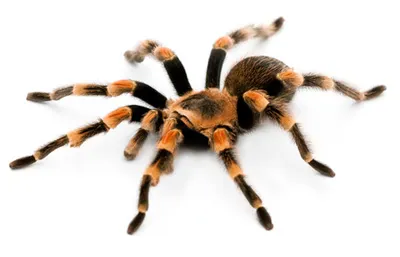
Breeding involves pairing a mature female with a mature male. The male must be introduced to the female’s enclosure, and the breeding process can be quite complex. The female may become aggressive, so careful observation is necessary. The male will typically deposit sperm webs. After successful mating, the female will produce an egg sac, which she will guard until the spiderlings hatch. The process takes careful planning and patience.
Caring for Spiderlings
Once the spiderlings hatch, they will need to be separated and provided with their own individual enclosures. This requires significant space and resources. Spiderlings are very delicate and require small prey items, such as fruit flies. They also require a higher humidity level than adults. The spiderlings will go through multiple molts as they grow. The success rate of breeding is based on the level of care provided.
In conclusion, providing excellent care for a Red Knee Tarantula requires a combination of knowledge, dedication, and attention to detail. By following the top 5 secrets outlined in this guide – creating the right habitat, proper feeding, handling with care, maintaining health and wellness, and understanding the breeding process – you can ensure your Red Knee Tarantula lives a long, healthy, and fascinating life. Remember, these magnificent creatures offer a unique and rewarding experience for any arachnid enthusiast.
